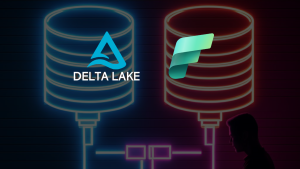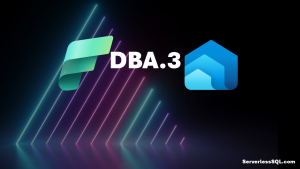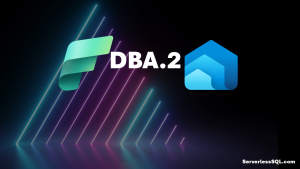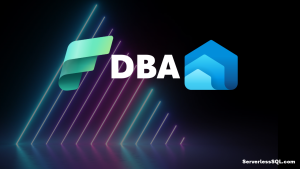Microsoft Fabric Warehouse for the Database Administrator (DBA): Series Overview
Overview
Let me start off this blog post by saying that no matter what data role you have, it’s important to handle data you use with care. If you’re a DBA (Database Administrator) who has been tasked with looking at how to “administrate” Fabric Warehouses, a cloud-based SQL service tailored towards data warehousing, what do you need to be aware of when working with this Software-as-a-Service product? Perhaps you’ve been asked to “look after this Fabric thing” or maybe you’ve overheard people talking about Fabric and thought “what’s my role in all of this?” Of course this isn’t just for DBAs, anyone working with data can be mindful of the various tasks/features that come into play when taking care of data. The “DBA” role of Fabric Warehouses could be included in another role definition, hey even Data Engineers need to know how to look after data…right?
Now some people may say “hey, you’re in the cloud so you don’t need DBAs/DBA-like Role!!” and I think “good luck then!” The role may not be called a “DBA” in the cloud, could be another role name, it doesn’t matter…what matters is that someone has to be aware of how to look after the service. It’s relatively easy to create a bunch of tables and start loading data…but what happens when things go wrong? How do we secure data? How do we monitor what’s going on?
In this series we’ll be tackling a variety of responsibilities a DBA has and looking at how to align that with the Fabric Warehouse service.

Role of the DBA
For those not particularly familiar with the responsibilities of a DBA, they are a Developers (and any organisation that stores data) best friend. Buy them pizza, if they don’t like pizza ask what they like then go buy lots of it. In all seriousness, a DBA performs tasks related to maintaining a functional and efficient database environment. The common saying of “data is the new oil/gold” can only be truly realised if that mission-critical “oil/gold” is highly available, fast to access, secure, recoverable in the event of catastrophe, and the relevant users have ongoing, uninterrupted access to data.
Developers (such as myself) can jump straight in and start coding/loading data. Who is going to catch me when I fall? That’s right, the DBA. As long as I have given them plenty of <insert favourite food here>. Some of my best friends are DBAs.
I don’t want to limit this to “SQL Server DBAs” but I will caveat and say that there will be a heavy bias towards Microsoft as Fabric is a Microsoft product.
Series Overview
In this series we’ll cover the following areas, this may be amended as the series progresses but take the list below as a guideline. Each area below will be a separate blog post and will be made available each week or fortnightly depending on how much depth each blog dives into.
- Overview of Microsoft Fabric and the Warehouse service
- Fabric Compute
- The SQL Engine
- Connectivity & Client Tooling
- Storage, Delta Lake, and the Parquet file format
- Metadata and Dynamic Management Views (DMVs)
- Transactions & Isolation Levels
- Security & Permissions
- Monitoring and Service Usage
- Disaster Recovery & Business Continuity
- Source Control and Continuous Integration/Continuous Delivery (CI-CD)
- Database Mirroring for Synchronisation into Fabric
- Performance Tuning and Recommended Practices
- Warehouse Service integration with Other Services
Considerations
We won’t be developing a Warehouse solution in this series, there will of course be SQL objects created so that we can work through the series, but building a Warehouse is not the focus. The Warehouse service itself is the core focus, not the solutions built on it.
Blog Resources
All resources are available in this GitHub repo. This will include SQL scripts and any other material relevant to this DBA for Fabric series.
Disclaimer
For disclosure I am a Microsoft Data Platform consultant who has been working predominantly with Microsoft technology for most of my career. I’m a current Microsoft Data Platform MVP and as such I have early access to private preview features and services. The thoughts and opinions in this blog are my own. Your usage of the contents of this blog is at your discretion. Always validate what you read, no matter the source.






1 thought on “Microsoft Fabric Warehouse for the Database Administrator (DBA): Series Overview”
Comments are closed.